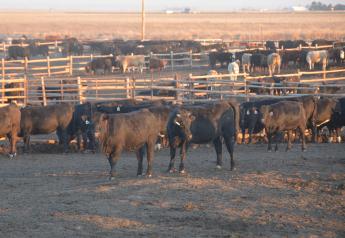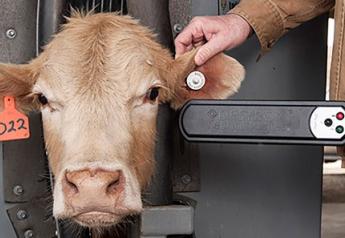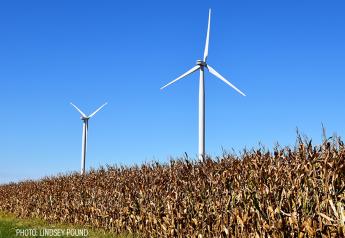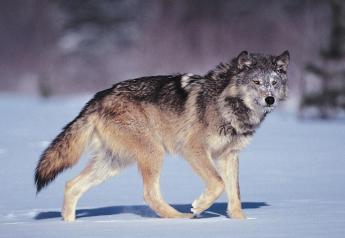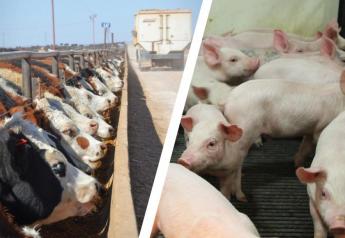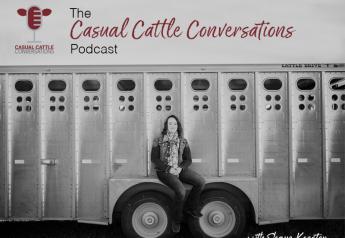Beef Reaches U.S. Record as Ranchers See More Gains

For a guy who just sold some of his cattle at the highest price ever, Missouri rancher Ryan Sharrock is showing less enthusiasm for beef. He says the meat is just too expensive and that the cost probably will keep rising.
While he got more than $1,000 each for 23 calves sold at auction a couple of weeks ago, the 33-year-old Sharrock says he’s cut back on steak dinners for his family of five in Patton, Missouri, to less than one a week from three. "It’s not so much a cheap family meal anymore," he said.
U.S. beef prices are up 74 percent since 2009 to the highest on record, after a seven-year decline in the herd left the fewest cattle in at least six decades, government data show. Meat costs are rising faster than any other food group, eroding profit margins at Hormel Foods Corp. and forcing Costco Wholesale Corp. and Chipotle Mexican Grill Inc. to raise prices.
Supply probably will remain tight. It can take three years to expand the herd, and a prolonged drought in Texas, the top producer, parched pastures needed to raise young animals. The government says the U.S. will become a net beef importer in 2015. Cattle futures already up 23 percent in the past year in Chicago may rally 7.3 percent to $1.578 a pound by the end of December, a Bloomberg survey of five analysts showed.
"Beef’s a staple at this point, so at many points, it’s inelastic on price," said Jake Dollarhide, the chief executive officer of Longbow Asset Management Co. in Tulsa, Oklahoma, which oversees about $75 million. "I don’t see consumer habits changing at these price levels."
Shrinking Herd
After years of high feed costs and drought, the domestic herd on Jan. 1 slid to 87.7 million head, the fewest to start a year since 1951 and the seventh straight decline, U.S. Department of Agriculture data show.
Beef demand peaks at this time of year as warm weather encourages outdoor grilling. At grocery stores, ground beef jumped 17 percent in the 12 months through April to a record $3.808 a pound on average, according to the Bureau of Labor Statistics. The USDA said May 23 that beef and veal prices will rise 5.5 percent to 6.5 percent this year, more than any food group.
The cost of beef for Denver-based Chipotle rose 25 percent in April from the fourth quarter of 2013, a "pretty dramatic" increase, Chief Financial Officer Jack Hartung said at a conference on June 11. The restaurant chain is increasing menu prices, with steak items fetching 70 cents to 80 cents more than chicken, up from a 35-cent premium.
Slow Expansion
Expanding the cattle herd to boost beef output is a slow process. The gestation for calves is nine months and animals take as long as 22 months to reach slaughter weight. Feedlots buy calves weighing 500 to 800 pounds raised mostly on pastures and then feed them a diet of mostly corn until they reach 1,200 pounds (544 kilograms) and can be sold to beef plants.
Cattle futures for August delivery, which track animals ready for slaughter, are up 15 percent this year on the Chicago Mercantile Exchange, and touched $1.474 a pound today, an all- time high for a most-active contract. Feeder cattle rose 25 percent, touching a record $2.095 a pound today. The Standard & Poor’s GSCI Spot Index of 24 commodities gained 4.4 percent since December, while the MSCI All-Country World Index of equities rose 3.9 percent. The Bloomberg Treasury Bond Index added 2.8 percent.
The cattle rally is boosting costs for some ranchers. Sharrock began the year buying more than 80 cows at $1,400 to $1,500 each to expand the number of calves he can sell to feedlots. After prices surged to as much as $2,100 at the end of May, he stopped buying cows because they were too expensive.
To supplement his income, Sharrock also buys for other ranchers. At the Greenville Livestock Auction in Illinois, about 50 miles east of St. Louis, he bought 41 head on May 28 at about twice the price of two years ago.
Demand Destruction
High prices may undermine the rally. With beef supply down, per-capita consumption will drop in 2015 as chicken rises and pork remains steady, the USDA said. Expanded output of cheaper meat would keep prices in check, said Christopher Narayanan at Societe Generale in New York.
"If we’re going to see another rally in live-cattle prices, we’d have to see continued strength in beef prices, but a lot of that would depend on the pork industry and the poultry industry," Narayanan, the head of agricultural commodities research, said in a May 12 interview.
The 18 percent drop in corn prices from a year ago also is creating an incentive for ranchers to expand, with the USDA predicting a record domestic harvest later this year.
Fewer Heifers
Even a move to expand the herd may keep supplies limited through next year as ranchers hold more cows for breeding rather than slaughter. Purchases by feedlots in March and April fell below year-earlier levels after starting the year higher and are expected to remain limited into 2015, USDA data show. As of April 1, feedlots had 6 percent fewer heifers than a year earlier, while steers rose 2 percent.
"The stars continue to line-up for a lasting, record-high, feeder-cattle market with sound fundamental supply and demand data supporting the surge," Corbitt Wall, the officer in charge of the St. Joseph, Missouri, branch of the USDA’s Livestock Market News, said in a June 6 report.
Persistent drought also limits expansion by damaging pastures. In Texas, 69 percent of the state is in moderate to exceptional drought as of June 10, the fourth straight year of dry weather for this time of year, according to U.S. Drought Monitor data. The USDA on June 11 trimmed its expectations for 2014 beef output by 0.6 percent to 24.5 billion pounds.
"The ever-tightening supply of cattle on the ground and the amount of beef we’re able to bring the consumer, that’s not going to change any time soon," said Altin Kalo, an economist with Steiner Consulting Group in Manchester, New Hampshire. "It’ll be three years down the road to even start to make a dent."


